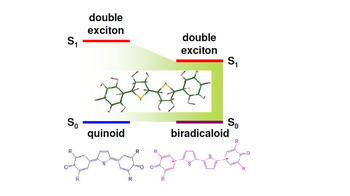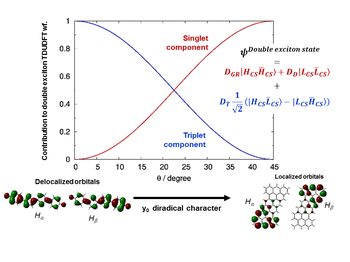
Conjugated singlet ground state diradicals have received remarkable attention owing to their potential electronic applications in organic field effect transistors (OFETs), organic photodetectors (OPDs) and near-infrared (NIR) dyes among others. Significant efforts have been devoted to stabilize the active open-shell molecules, and a large number of stable diradicals with an open-shell singlet ground state have been synthetized with dierent conjugated cores and varying diradical character.
There has been a tremendous effort also on the rationalization of the properties from a theoretical point of view, including their linear and non-linear optical properties and their application in singlet fission processes.
A distinctive character of these systems is the location of the double-exciton state, a low lying excited state dominated by the doubly excited HOMO,HOMO->LUMO,LUMO configuration, (where HOMO = highest occupied molecular orbital, LUMO = lowest unoccupied molecular orbital) which may influence optical and other photophysical properties.
We have shown recently, via CASPT2//CASSCF calculations and less expensive TDUDFT and spin-flip TDDFT calculations, that for some systems displaying remarkable diradical character, the double exciton state becomes the lowest energy excited singlet state, a peculiarity which is well known for the class of polyenes.
